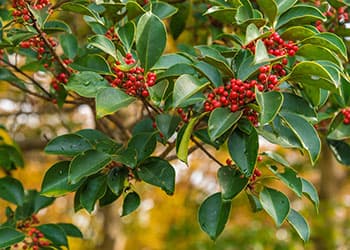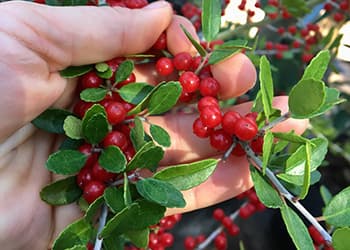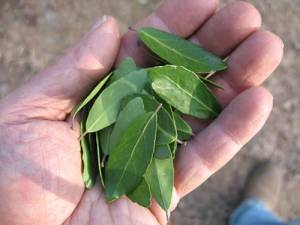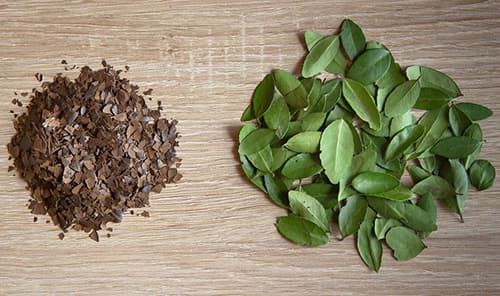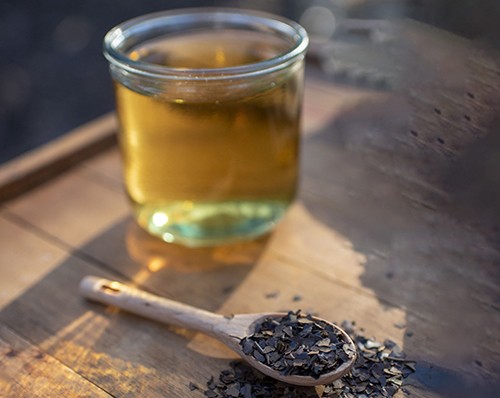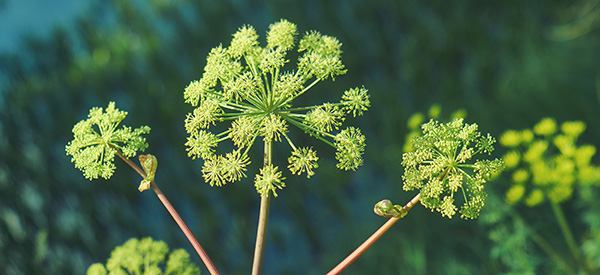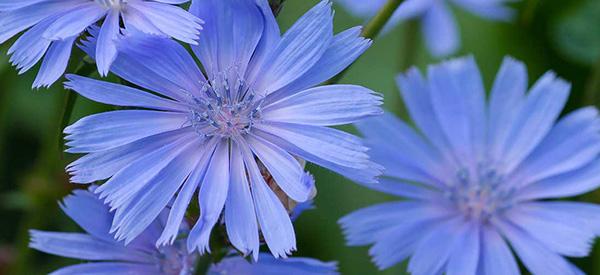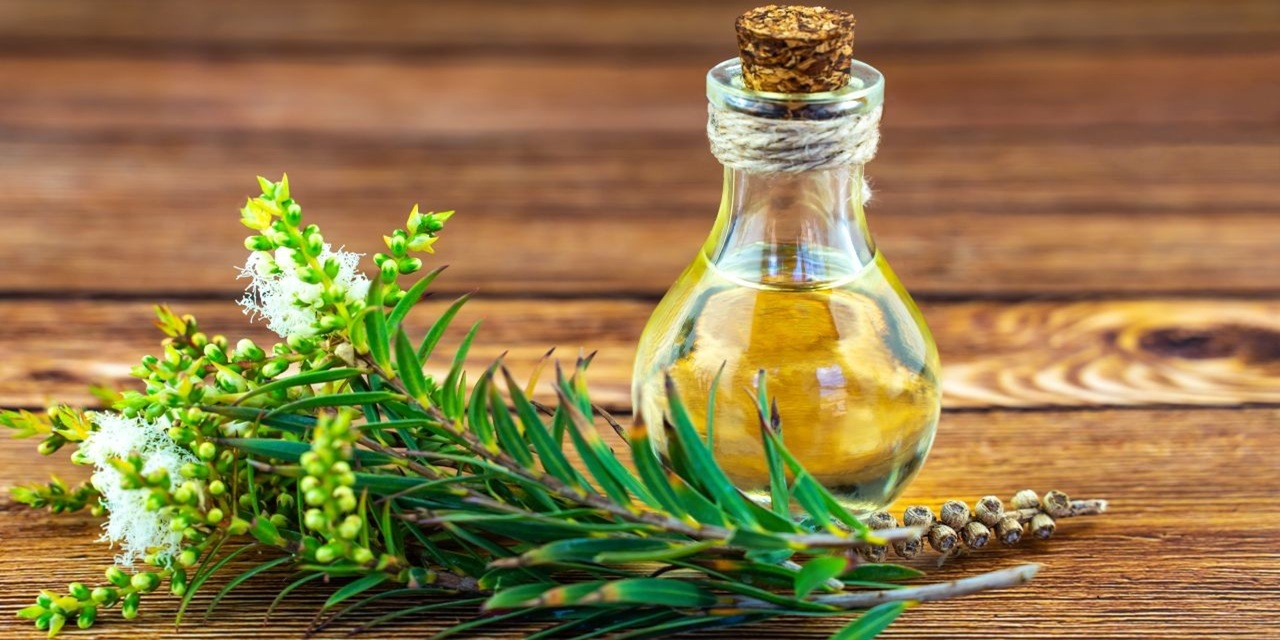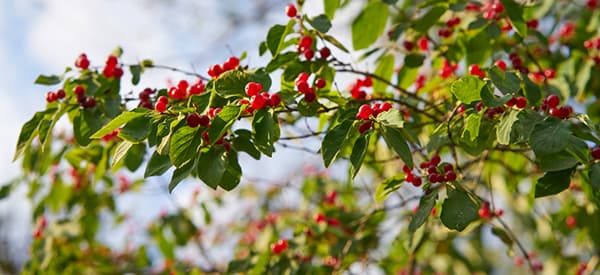
Yaupon: America’s Forgotten Tea
Yaupon Holly (Ilex vomitoria) has played an important role in Native Americans’ lives for over a thousand years. It is a perennial, evergreen shrub that is native to southeastern North America and is one of two endemic American holly plants that contain caffeine. Yaupon is also rich in nutrients, antioxidants and other compounds. Native Americans used it as a tea for hospitality purposes and for purification rituals and may have used it as a laxative. They also made use of the wood to make arrows. Today, it is used as a landscaping plant and is an ingredient in some commercial skin care products.
The name yaupon comes from ‘yapa’, the Siouan language, Catawban. It means tree (ya) leaf (pa). Apart from using yaupon as a daily beverage, it also played a big role in purification ceremonies. Native American tribes used to travel to the Atlantic Gulf coasts every spring to partake in the ritual. After three days of fasting, copious amounts of the tea would be drunk to induce vomiting and diarrhea to purify the body. This is how it got its Latin name, vomitoria, from the colonists who witnessed the ceremony. It is worth noting that yaupon is not an emetic, but the tea may have contained other ingredients.
Today, yaupon holly is a popular landscaping plant used in the Southeastern US. Yaupon is a very densely foliated shrub that serves well as hedges and screens. It is easily pruned into shapes which makes it popular for use in ornamental designs. The branches of colorful red berries are used as a Christmas decoration. The red berries are also an important food source for many birds and mammals, and white-tailed deer eat the leaves. Apart from its cosmetic use, it is becoming popular once again as a substitute for tea and coffee with added medicinal benefits.
Where Yaupon Is Found
Yaupon is found in the Southeastern US from Virginia, along the Atlantic coast to Florida, and including the gulf states with Oklahoma and eastern Texas. It can also be found in Chiapas, Mexico. It thrives in the well-drained sandy soils of coastal areas, but can survive in a number of different soils.
⇒ The Complete Map of Edible Plants: Find Out What You Have in Your Area! (Video)
How To Identify Yaupon
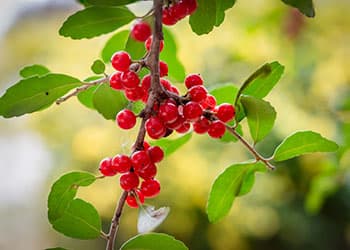
Yaupon holly is a perennial, evergreen shrub or small tree that can grow 15-30 feet tall depending on the location. It has small oval, dark green leaves that are densely clustered. Both male and female yaupon shrubs bear white flowers, but only the female produces the colorful red drupes (‘berries’).
Leaves. The leaves are arranged in an alternate pattern, and are small, oval with slightly serrated edges that are not prickly. They grow 1-4.5cm long and 1-2cm wide. The leaves are a glossy, dark green with a leathery appearance on the upper side of the leaf and a paler color underneath.
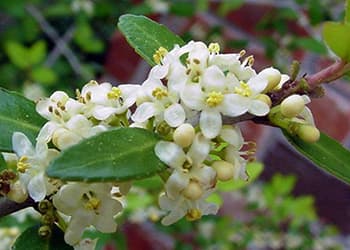 Flowers. Yaupon holly is dioecious which means functional male and female flowers are found exclusively on separate plants. Both male and female yaupon produce flowers in spring, around April and May. They are white, four-lobed blooms that are arranged in clusters.
Flowers. Yaupon holly is dioecious which means functional male and female flowers are found exclusively on separate plants. Both male and female yaupon produce flowers in spring, around April and May. They are white, four-lobed blooms that are arranged in clusters.
Fruits And Seeds. Only the female plant produces the characteristic red berries in the fall. They stay attached to the branches throughout the winter and spring. The berries develop in clusters and are usually red, but may be orange or yellow depending on the variety. They are shiny, translucent and less than ¼ inch in diameter. Each berry contains 4 hard, oval seeds with a striped look.
Roots. Yaupon has a taproot with many small roots growing out of it. The taproot goes quite deeply into the soil to a depth of between 17 and 25 inches. It is this taproot that allows the yaupon to survive periods of drought which are common in its native areas.
Stem. The stem of the yaupon can be single or multi-trunked. Its bark is smooth, very light gray in color and with lighter gray to white patches.
⇒ 5 ‘Miracle Trees’ The Native Americans Used For Medicine (Video)
Yaupon holly is known by a number of common names, including cassina (or cassena), yaupon tea, Indian black drink, Indian tea, Appalachian tea and Carolina tea.
There are a number of dwarf, weeping and columnar varieties including:
- Ilex vomitoria ‘Nana’, a dwarf yaupon holly
- Ilex vomitoria ‘Pendula’, a weeping yaupon holly
- Ilex vomitoria ‘Will Fleming’, a tall, upright yaupon holly
How To Grow Yaupon
Yaupon is easy to grow once established and can tolerate a range of different soils but grows best in sandy soils. It is suited to USDA hardiness zones 7a-9b. The plant can be propagated by seeds or cuttings and can take up to 2 years before a viable transplant to the garden is possible. Cuttings may be the preferred method for cultivars to ensure plants that grow true to type.
Growing Yaupon From Seeds
Collect the seeds from mature berries in the fall and plant immediately for best results in individual 4 inch pots in a half-half perlite and loam mixture. Plant ¼ inch deep and cover with loam and coarse sand. Dampen the potting mixture with a spray bottle. Keep the mixture moist but allow it to dry out in between misting. Cover the pots with plastic wrap and keep warm (70 °F) for 1-2 months.
Afterwards, place them in the fridge for 2-3 months for cold stratification. Then remove the plastic wrap and place pots outside in partial shade. Seeds should begin to germinate in the spring. Keep the seedlings in partial shade for the first year. They can be transplanted into the garden the following spring.
Growing Yaupon From Cuttings
Semi-hardwood cuttings can be taken in the late fall. Cut a small branch just below a leaf node and remove the bottom leaves. Dampen the cut end with water and dip in a rooting hormone. Push in a pot with a half perlite and half coarse sand mixture. Keep moist and warm until the roots develop in about 8-10 weeks. Cuttings will need to be transplanted to a larger pot in the spring. Keep in a sheltered position until ready to plant out in the garden the following spring.
Plant Care And Maintenance
Rooted cuttings and seedlings need to be planted out in slightly acidic, well-drained soil in spring. They need to be watered deeply to encourage strong, deep roots. However, when the yaupon is established, it will tolerate drought and will only need to be watered in an exceptionally dry summer. Yaupons need to be pruned at least once per year to shape the tree, keep them looking neat and to encourage regrowth. Yaupon holly can be invasive, so cut stumps will need to be treated with a herbicide to prevent root suckers. Yaupon is mainly a disease and pest-free plant that only occasionally suffers from leaf miners, mites and aphids.
How To Harvest Yaupon
Young fresh leaves can be harvested at any time but November is the best time. Yaupon leaves can be used fresh, dried or roasted. Leaves can be stripped off a branch whilst it is still on the tree or a whole branch can be cut off. If using them fresh, simply detach from the branch, wash and use. If using them dried, a cut branch can be hung upside down in a warm place for 2 weeks until the leaves are dry. Placing a sheet of newspaper underneath will help to catch the dry leaves when they fall. If roasting, place the leaves in a single layer on a tray in an oven at 350 °F for 15-20 minutes. After cooling, the roasted leaves can be crumbled and placed in an airtight container.
What Yaupon Is Good For And Natural Remedies Made From It
Yaupon is highly nutritious and packed full of antioxidants (theobromine, theophylline), polyphenols (chlorogenic acids) and caffeine. Yaupon is used medicinally as a tea and also as an ingredient in commercial skin care products. It has anti-bacterial, anti-viral, anti-cancer, anti-obese and anti-diabetic properties as well as being neuroprotective and cardiovascular protective.
The chlorogenic acids play an important role as an anti-inflammatory and help to regulate the digestive system whilst also protecting against type 2 diabetes, heart disease, fatty liver disease, cancer and obesity.
Theobromine supports brain function and may protect against the onset of Alzheimer’s disease. Caffeine acts as a stimulant that helps to improve alertness and increase energy levels. Caffeine can also act as a mood enhancer.
Yaupon tea may prove beneficial in the following conditions: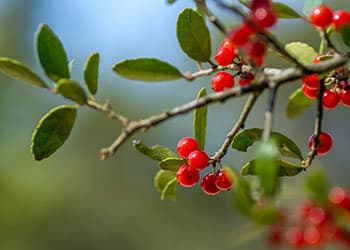
- Cancer
- Neurodegenerative diseases
- Type 2 diabetes
- Cardiovascular diseases
- Fatty liver disease
- Obesity
- Digestive issues
- Improve brain function
- Improve alertness, energy and stamina
What Parts Of Yaupon Are Used For Remedies
Leaves and twigs may be used to make a medicinal tea. It has traditionally been used by Native Americans and adopted by the colonists. The leaves may be used fresh (although the tea will not be very strong), dried or roasted. Do not use the berries as they are toxic. Yaupon tea leaves can be re-steeped as there are no bitter tasting tannins in Yaupon, but the tea will be weaker.
⇒ The Native American Superfood That Saved American Settlers (Video)
How To Make Yaupon Tea
- Add 1 teaspoon of dried or roasted Yaupon in a 8-ounce cup (237ml).

- Pour on freshly boiled water.
- Steep for 5-10 minutes depending on taste.
- Strain and enjoy!

How To Use This Remedy
The tea can be taken with your preferred sweetener, and milk can also be added. Various different flavors can be achieved by adding herbs and spices such as mint, lemon, cinnamon etc. It can also be drunk as a refreshing iced tea on hot days.
Warnings And Cautions
Like all hollies, do not use the berries as they are toxic.
Ensure the tea is only made from Ilex vomitoria as other hollies are not safe to use.
More research is needed, especially the effects on human health of the compounds contained in yaupon.
As yaupon contains caffeine, it is necessary to limit the amount of tea consumed. Too much caffeine is responsible for a range of side effects such as irritability, anxiety, digestive problems, insomnia etc. The maximum recommended dosage of caffeine is 400mg per day, which is about 5-7 cups.
Pregnant and nursing mothers need to keep the level of caffeine to 200mg per day.
People with certain health conditions like ulcer disease, gastroesophageal reflux disease, severe anxiety or impaired liver or kidney function need to be careful about drinking caffeine.
You may also like:
Erratic Blood Sugar? Never Eat This Veggie (Video)
3 Warning Signs That You Have a Fatty Liver








